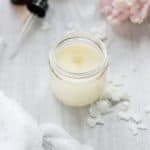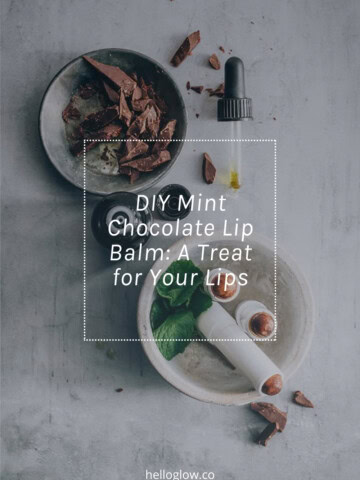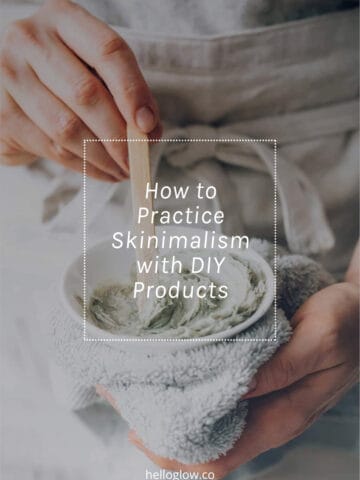Lip balm made from beeswax isn't on the menu if you're vegan and want to avoid all animal products. Try these vegan lip balm recipes with plant-derived wax and nourishing oils to protect your pout all year long.
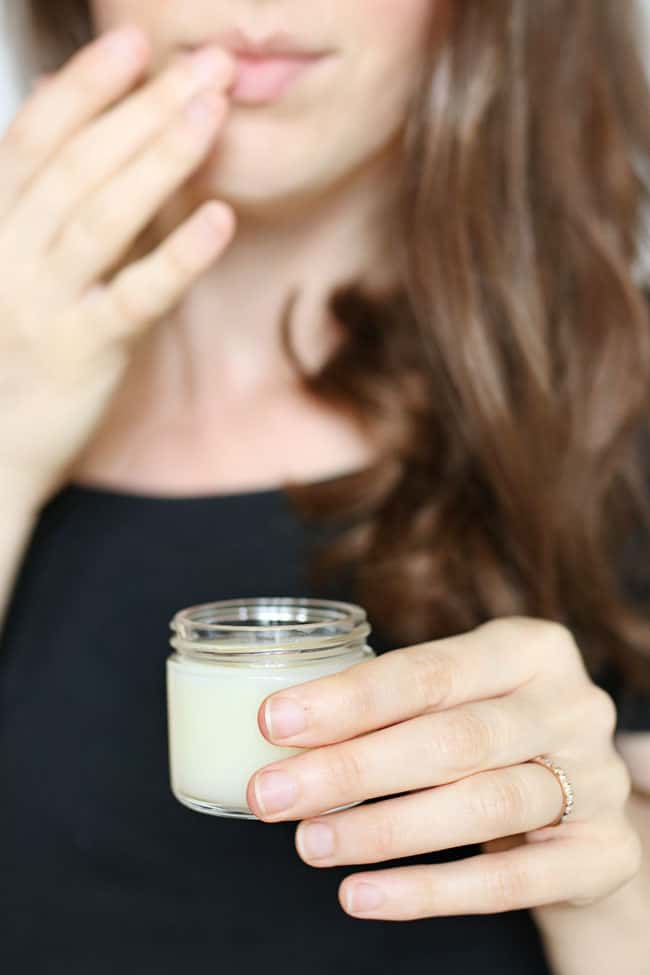
Even if you’re careful about what you put on your skin, not all natural lip balms are created equal. Many contain things like lanolin (aka sheep grease—gross!), parabens, and fragrances.
Ever since I whipped up my own lip balm recipe a few years ago, I’ve put in extra time perfecting it—and this vegan lip balm is now one of my favorite homemade beauty products ever.
Jump to:
How to Make Vegan Lip Balm
Beeswax is usually the wax of choice in natural beauty products. But even though bees aren’t harmed when collecting it, it’s still an animal product and unsuitable for vegans. So let's take a look at some alternatives!
Vegan Wax Options
There are several vegan waxes that you can use to make lip balm, each with its own set of benefits. Here are some popular options:
Candelilla Wax: Provides a smooth texture, firmness, and gloss to lip balms. It is a good alternative if you're vegan or allergic to bee products.
Carnauba Wax: Known for its hardness and high melting point, carnauba wax adds a glossy finish to lip balms. It also helps create a protective barrier on the lips.
Soy Wax: A renewable and biodegradable option, soy wax provides a smooth and creamy texture. It is a good choice for those looking for an eco-friendly alternative.
Sunflower Wax: Extracted from sunflower oil, this wax creates a soft, smooth feel to lip balms. It is high in essential fatty acids, providing moisturizing properties.
Rice Bran Wax: Adds firmness and a glossy texture to lip balms. It also has emollient properties that help keep the lips moisturized.
Solid Oil or Butter — By combining a plant-based wax with a solid oil like coconut oil, you can effectively replace the beeswax and still end up with a nourishing lip balm. You can also use cocoa butter or shea butter.
3 Vegan Lip Balm Recipes
I chose to use soy wax for my vegan lip balm because it’s what I had on hand, but not everyone's a fan of soy (understandably!) so there are two additional vegan lip balm recipes you can whip up if you'd prefer to skip the soy wax and still keep things animal-free.
1. Lavender Lip Balm with Soy Wax
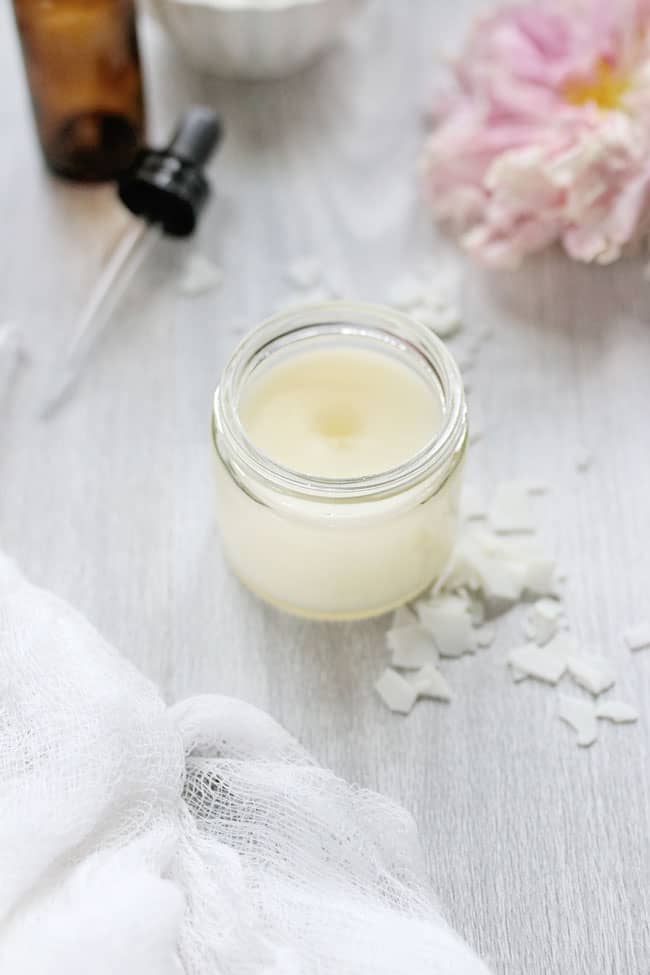
This nourishing soy wax lip balm recipe is chock full of things like nontoxic soy wax, nourishing coconut oil [source], and relaxing, aromatic lavender essential oil [source] to keep your lips soft. Plus, it contains antioxidants and skin soothers from carrot seed oil [source] to revitalize skin and heal chapped lips.
- 2 tablespoon soy wax
- 1 tablespoon coconut oil
- 20 drops carrot seed oil
- 10 drops lavender essential oil
The more coconut oil you add, the shinier and glossier your lip balm will be when it warms up. If you prefer your lip balm on the firmer side, go ahead and add an extra teaspoon of wax until you get the consistency you prefer.
2. Geranium Lip Balm with Rice Bran Wax
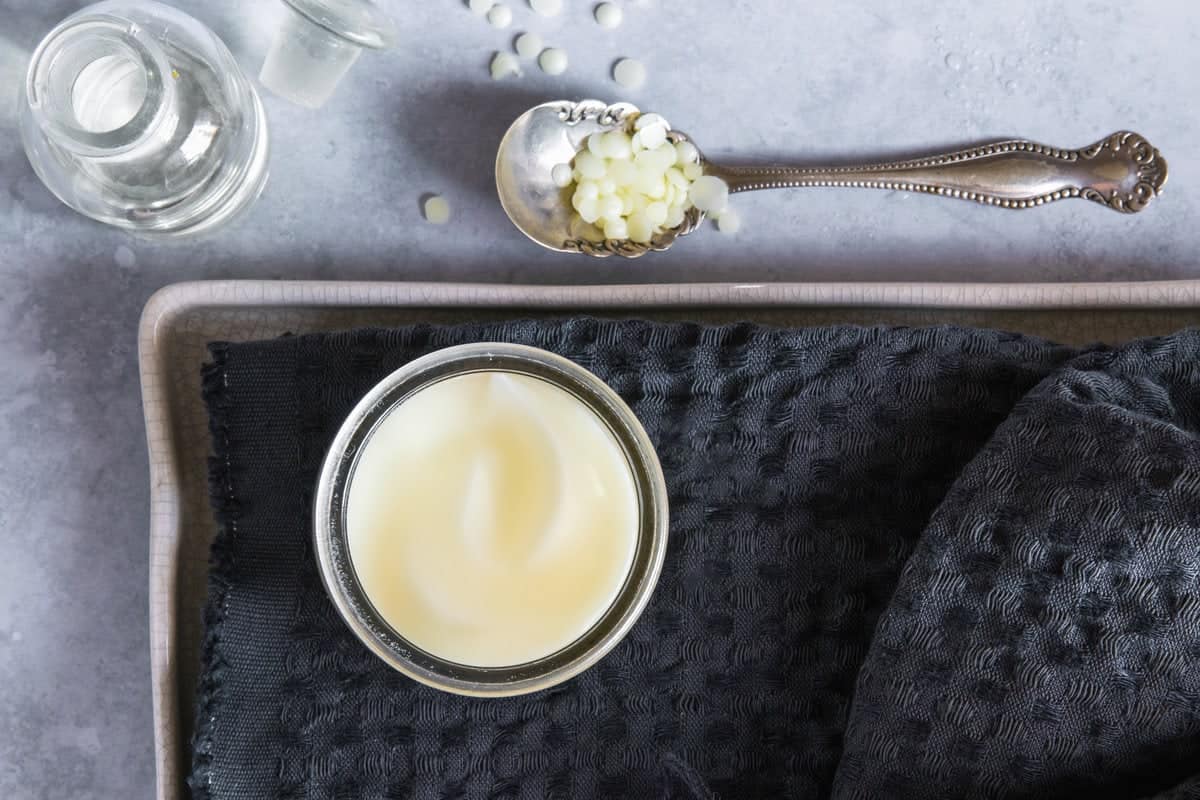
Rice bran wax is a hard wax, so a little goes a long way. Mix it with sweet almond oil and shea butter for a buttery, nourishing balm that soothes and softens chapped lips.
- 1 tablespoon rice bran wax
- 2 tablespoon shea butter
- 3 tablespoon sweet almond oil
- 10-15 drops geranium – Geranium EO helps soothe dry, cracked skin. It has antimicrobial and anti-inflammatory properties [source]. Plus, it smells like a dream.
3. Chamomile Lip Balm with Candelilla Wax
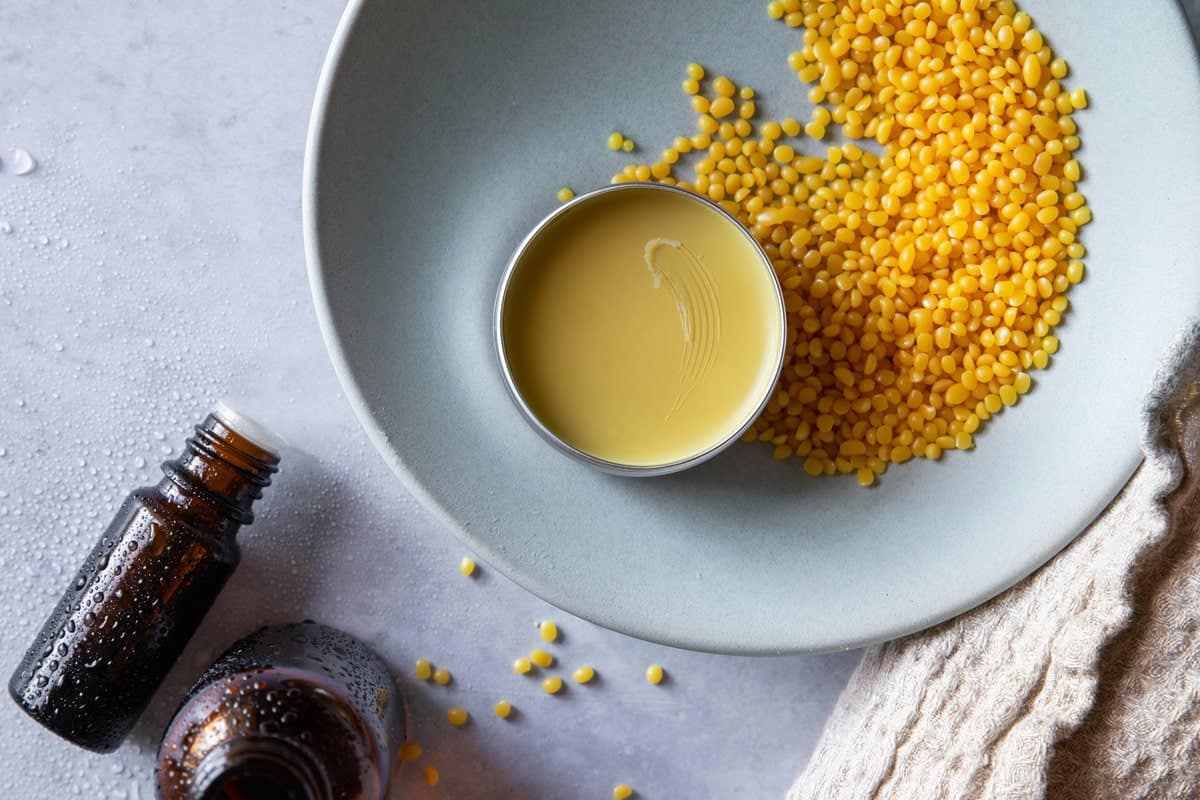
Candelilla wax is a natural wax derived from the leaves of the candelilla shrub, native to northern Mexico and the southwestern United States. Known for its firm texture and glossy finish, it's a popular vegan alternative to beeswax in various cosmetic and skincare products, like lip balm!
- 1 tablespoon candelilla wax
- 2 tablespoon cocoa butter
- 2 tablespoon olive oil
- 10-15 drops of chamomile – Chamomile EO has long been known to soothe chapped skin and replenish moisture [source].
Instructions
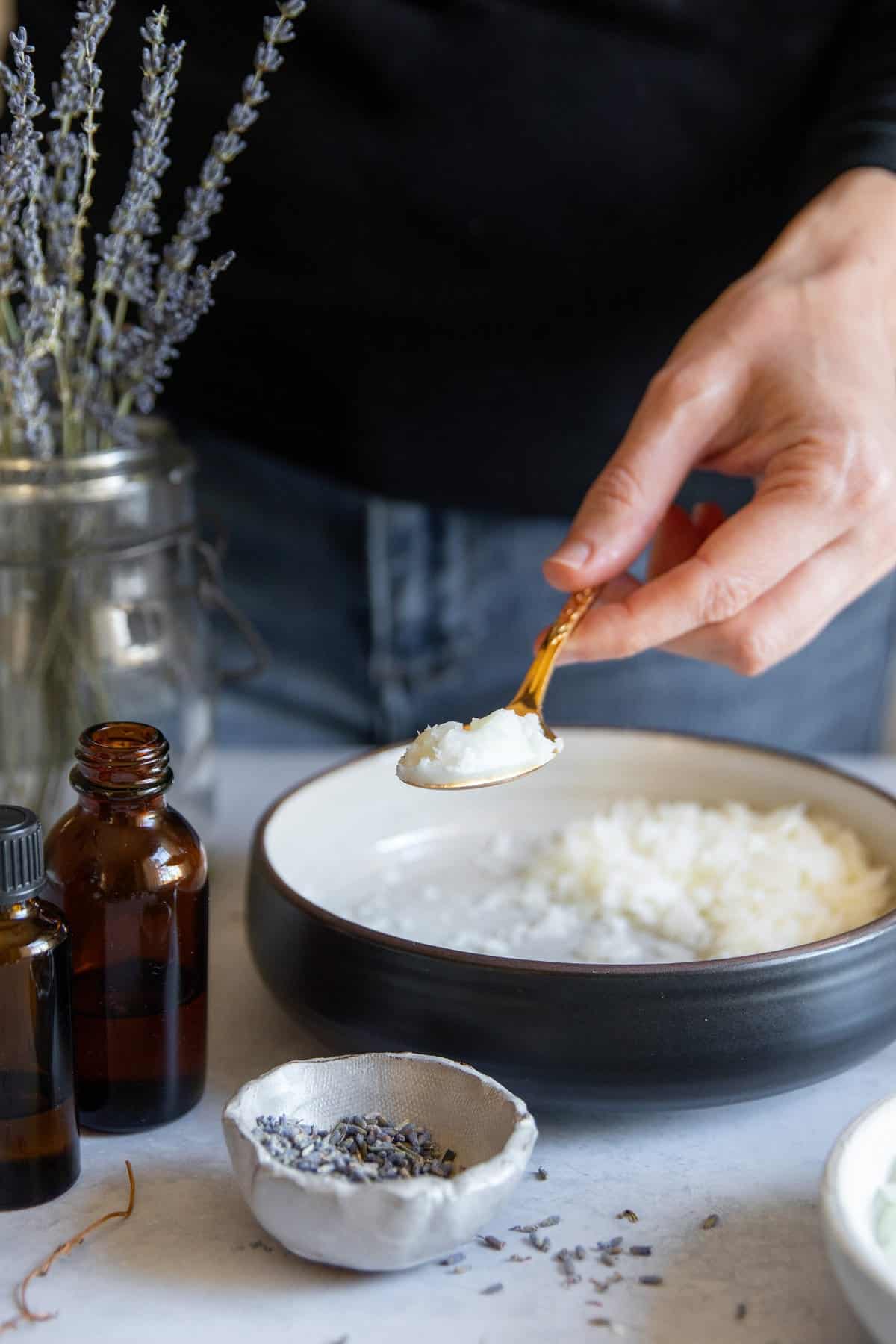
Step 1 | Combine the Oil and Wax
In a microwave-safe bowl, combine oil and wax. Heat in short bursts until the wax is completely melted.
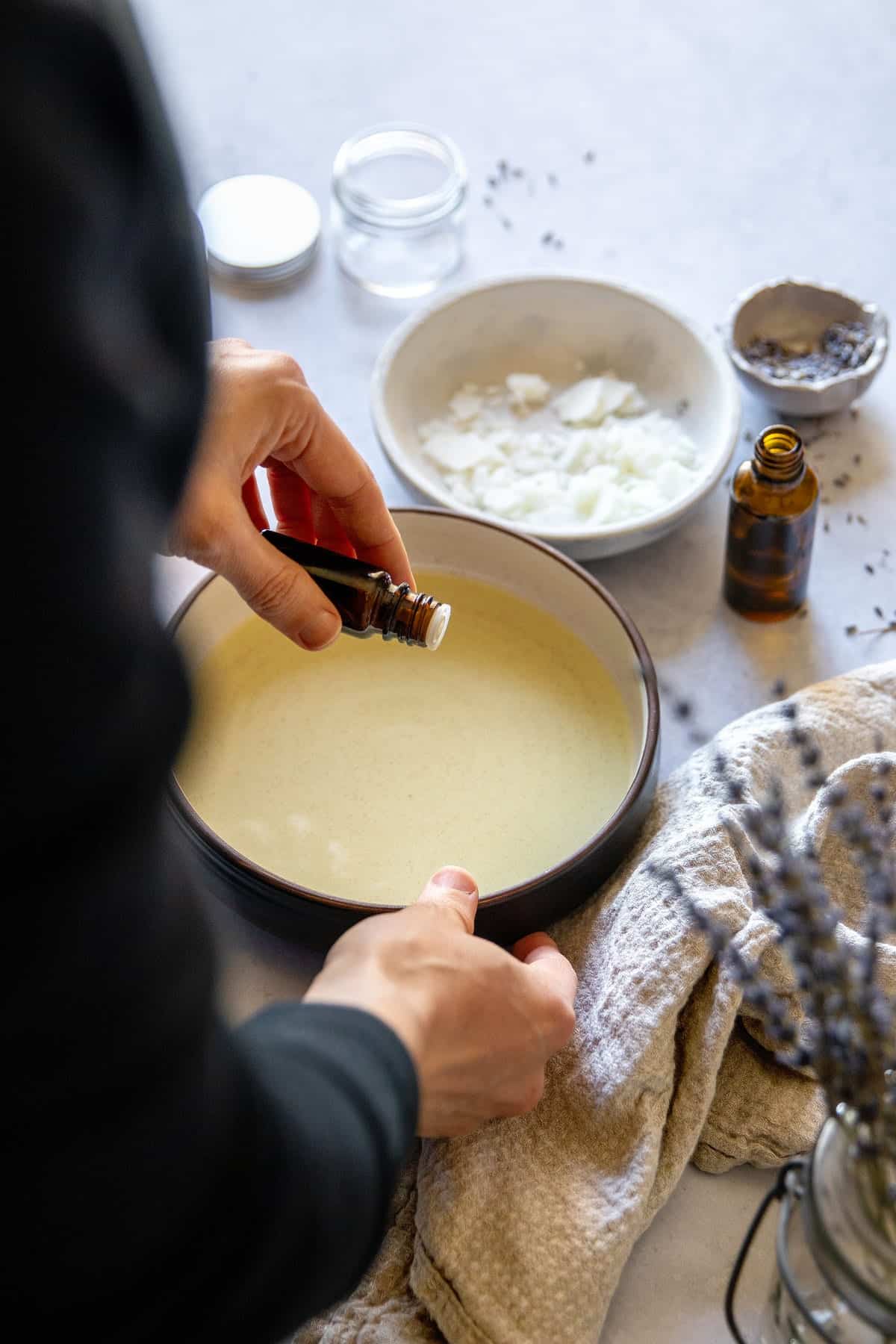
Step 2 | Add the Essential Oil
Let the wax cool for a minute or two before adding your essential oils. Swirl or stir the mixture to combine.
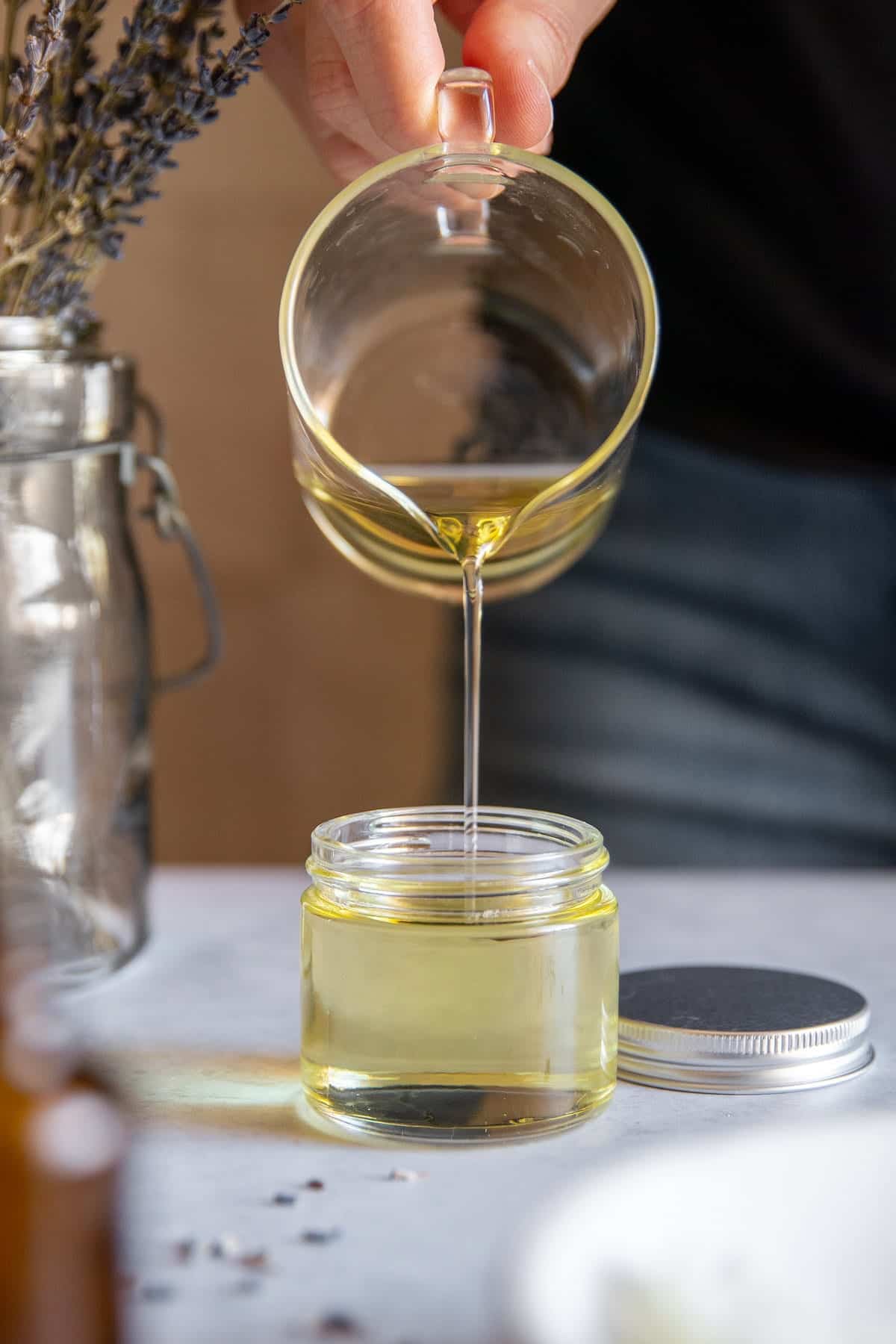
Step 3 | Transfer to Your Container and Let Cool
You can even add a pinch of dried raspberry or beet root powder to give it a pretty pink tint. Then carefully pour the melted wax into the container.
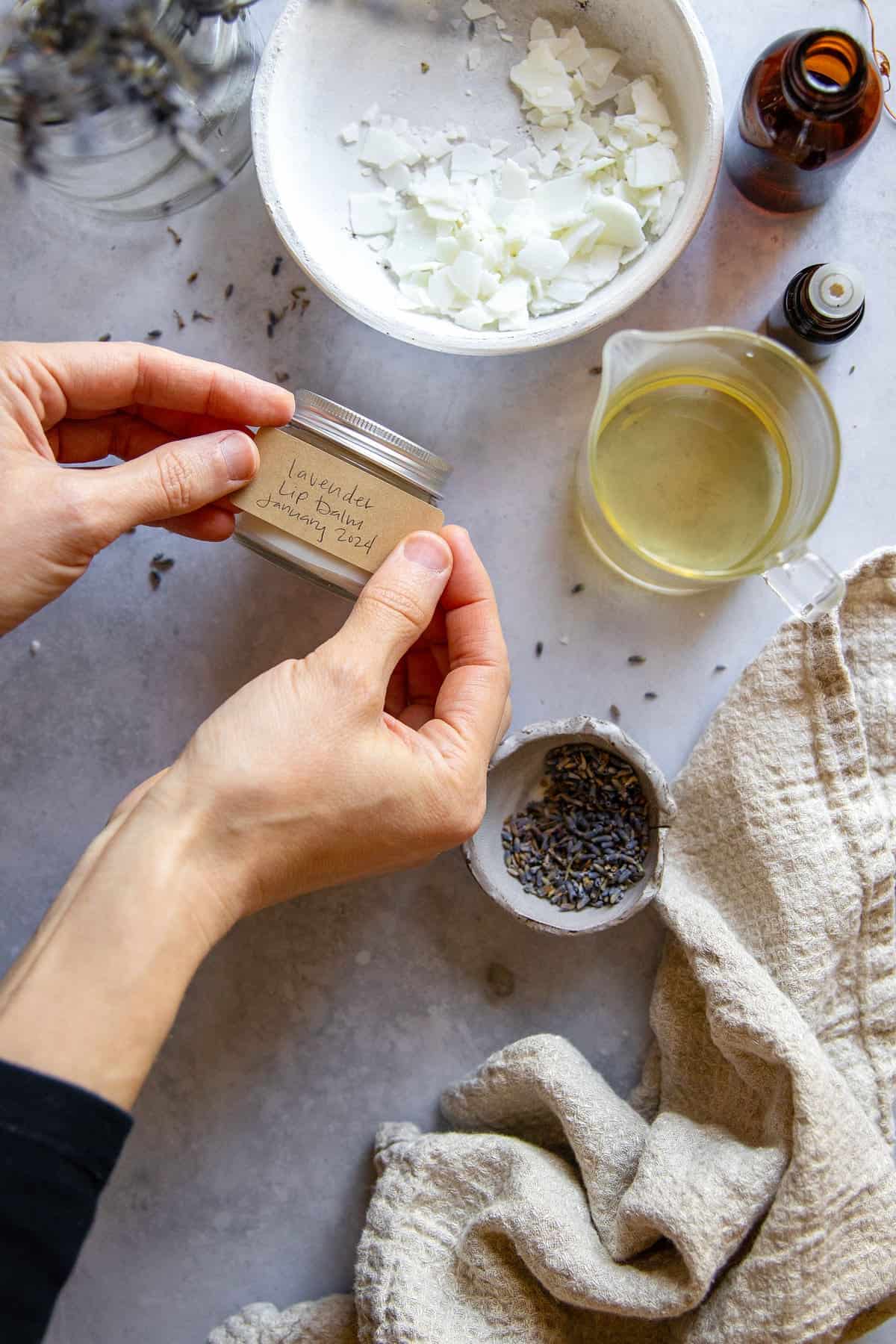
Step 4 | Label and Date Your Lip Balm
I keep a stash of these paper labels with my craft supplies so can I label all of my creations with the name, ingredients, and date. That way I'll know when it's time to toss it and make a fresh batch.
Hint: If your wax is clumping up when you add the room temperature oils pop it back into the microwave and heat in 10-second bursts until it's liquid again.
Substitutions
Carrier oils — You have lots of options when it comes to carrier oils. Camellia oil helps reduce the signs of aging and increase collagen production [source], thus making lips look fuller. Almond oil is chock full of healthy fats, almond oil replenishes moisture [source] and locks it in, so lips remain plump and flake-free.
Essential oils — Try any of these lip-friendly essential oils that are safe for use in lip balms.
Lip Balm Containers
I usually keep homemade lip balm in small, repurposed jars I've snagged from various places. But you can always use plastic lip balm containers, paperboard tubes, or metal tins.
This recipe makes about 2 ounces, which can fill a lot of lip balm tubes, so make sure you have enough containers on hand before melting the oils.
Storage + Usage
If made with natural ingredients and stored in a cool, dry place away from direct sunlight, homemade lip balm can last anywhere from 6 months to a year. But it will go rancid eventually, so it's important to label and date your lip balm once it's cooled.
And this balm isn't just limited to lips—you can apply this nourishing balm anywhere you have dry skin. I love using it on the backs of my hands (with all the washing we’re doing nowadays, this really helps!), on my face, and even as a split-end sealing hair serum. It does it all.
FAQ
If you’d like your lip balm to have flavor, the easiest thing to do is add flavor oils or spices with natural flavor, such as cinnamon, rose petals, coffee, or finely ground dried citrus peels. Just be forewarned, commercial flavor oils aren’t considered nontoxic like natural spices are.
There isn’t a hard-and-fast expiration date for homemade lip balm. Since our vegan lip balm recipe only contains oils, it should last for about 6 months to a year without preservatives.
If you add any water-based ingredients, like aloe vera, or food-based flavorings, it will expire much sooner and should be used within 2 weeks to a month.
Lucky for you, there are quite a few vegan waxes besides soy wax. Try carnauba, sunflower, bayberry, and even emulsifying wax.
Shea butter and cocoa butter are vegan alternatives that harden at room temperature like soy wax, but they create more of a buttery consistency. Because of that, they require some experimentation if you plan to use them in place of soy wax in this recipe.
It might! Coconut oil naturally softens when it gets warm out, so your lip balm may take on a more gloss-like consistency. If that’s the case, you can always re-melt your balm and add more wax.
I love these eco-friendly cardboard lip balm tubes. I also recommend repurposing old plastic lip balm containers or using small aluminum tins or glass jars.
Vegan Lip Balm with Lavender
Equipment
- 2-ounce glass jar or lip balm tube
Materials
- 2 tablespoons soy wax (carnauba or candellila wax will also work, but you'll need to experiment to find the right the amount)
- 1 tablespoon coconut oil
- 20 drops carrot seed oil (or another carrier oil of your choice)
- 10 drops lavender essential oil (or geranium essential oil)
Instructions
- Place the wax and coconut oil in a small microwave-safe dish. Microwave in 15-second intervals until melted, then stir with a popsicle stick or toothpick to blend it all together.
- Let it cool for a couple of minutes. Add the lavender and carrot seed oils and stir again.
- Pour the mixture into a small glass jar or lip balm tube. Let cool completely before using.
Notes
u003cstrongu003eReferencesu003c/strongu003e
Lin TK, et al. Anti-inflammatory and skin barrier repair effects of topical application of some plant oils. Int J. Mol Sci. 2018.
Koulivand PH, et al. Lavender and the nervous system. Evid Based Complement Alternat Med. 2013.
Moore EM, et al. The enigma of bioactivity and toxicity of botanical oils for skin care. Front Pharmacol. 2020.
Keen MA, et al. Vitamin E in dermatology. Indian Dermatol Online J. 2016.
Singh S, et al. Formulation and evaluation of carrot seed oil-based cosmetic emulsions. J Cosmet Laser Ther. 2019.
Binic I, et al. Skin Ageing: natural weapons and strategies. Evid Based Complement Alternat Med. 2013.
Ahmad Z. The uses and properties of almond oil. Complement Ther Clin Pract. 2010.
Narnoliya LK, et al. The phytochemical composition, biological effects and biotechnological approaches to the production of high-value essential oil from geranium. Essential Oil Research. 2019.
Lee SH, et al. Effect of German chamomile oil application on alleviating atopic dermatitis-like immune alterations in mice. J Vet Sci. 2010.
This post was medically reviewed by Dr. Rina Mary Allawh, M.D., a dermatologist who practices adult and pediatric medical dermatology, skin cancer treatment, and cosmetic dermatology. Learn more about Hello Glow's medical reviewers here. As always, this is not personal medical advice, and we recommend that you talk with your doctor.
253
